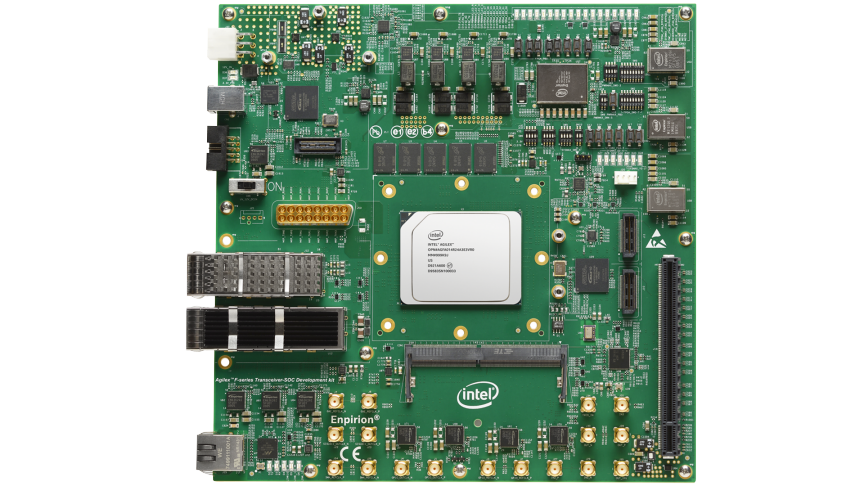Time: 2025-01-02 14:29:58View:
Transceivers in FPGAs (Field-Programmable Gate Arrays) are high-speed serial communication blocks integrated into the FPGA fabric. They are designed to transmit and receive data serially at very high speeds over various communication protocols. These transceivers are essential for enabling reliable and efficient data transfer between FPGAs, processors, storage devices, and other peripherals.

Key Functions of FPGA Transceivers
1.High-Speed Serial Communication:
l Transceivers facilitate serial communication at multi-gigabit speeds (e.g., 10 Gbps, 25 Gbps, or even higher).
l Replace parallel data lines with fewer serial lanes, reducing pin count and simplifying PCB design.
2.Protocol Support:
Support industry-standard protocols such as:
l PCI Express (PCIe)
l Ethernet (10G/25G/100G)
l Serial RapidIO
l SATA
l HDMI
l JESD204B (for high-speed ADC/DAC interfaces)
3.Clock and Data Recovery (CDR):
l Extract the clock signal from the incoming serial data stream.
l Ensure proper data alignment and timing.
4.Signal Integrity:
Provide features like equalization, pre-emphasis, and de-emphasis to maintain signal quality over long distances.
5.Error Detection and Correction:
Implement mechanisms such as Forward Error Correction (FEC) and Cyclic Redundancy Check (CRC) for reliable data transfer.
6.Data Serialization and Deserialization (SerDes):
l Convert parallel data from the FPGA fabric into serial data for transmission (serializer).
l Convert incoming serial data back into parallel data for internal processing (deserializer).
7.Low-Latency Communication:
Essential for applications requiring real-time data exchange with minimal latency.
Applications of FPGA Transceivers
1.Networking and Telecommunications:
l Ethernet switches and routers.
l Optical communication systems (e.g., QSFP28, SFP+).
2.Data Centers:
l High-speed data links for servers and storage devices.
l PCIe Gen4/Gen5 interconnects.
3.Broadcast and Video Processing:
l HDMI and DisplayPort interfaces for video streaming.
l Real-time video compression and processing.
4.High-Performance Computing (HPC):
Low-latency connections for clustered computing systems.
5.Wireless Infrastructure:
JESD204B/C interfaces for ADC/DAC in SDR (Software-Defined Radio) systems.
6.Automotive:
l High-speed data links for advanced driver-assistance systems (ADAS).
l Automotive Ethernet.
Advantages of Using FPGA Transceivers
· Scalability: Support a wide range of data rates and protocols.
· Flexibility: Programmable to adapt to various communication standards.
· Cost-Efficient: Reduce the need for external SerDes chips.
· Reduced PCB Complexity: Fewer pins and traces compared to parallel interfaces.
· Energy Efficiency: Optimized power consumption for high-speed data transmission.
Popular FPGA Families with Transceivers
· Xilinx (AMD): Virtex, Kintex, Artix, and Versal series
· Intel (Altera): Stratix, Arria, and Cyclone series
· Lattice: ECP5, CrossLink, and Certus-NX series
In summary, FPGA transceivers are powerful components for achieving high-speed, reliable, and efficient serial communication in modern digital systems. They play a critical role in industries ranging from telecommunications to automotive systems and data centers.